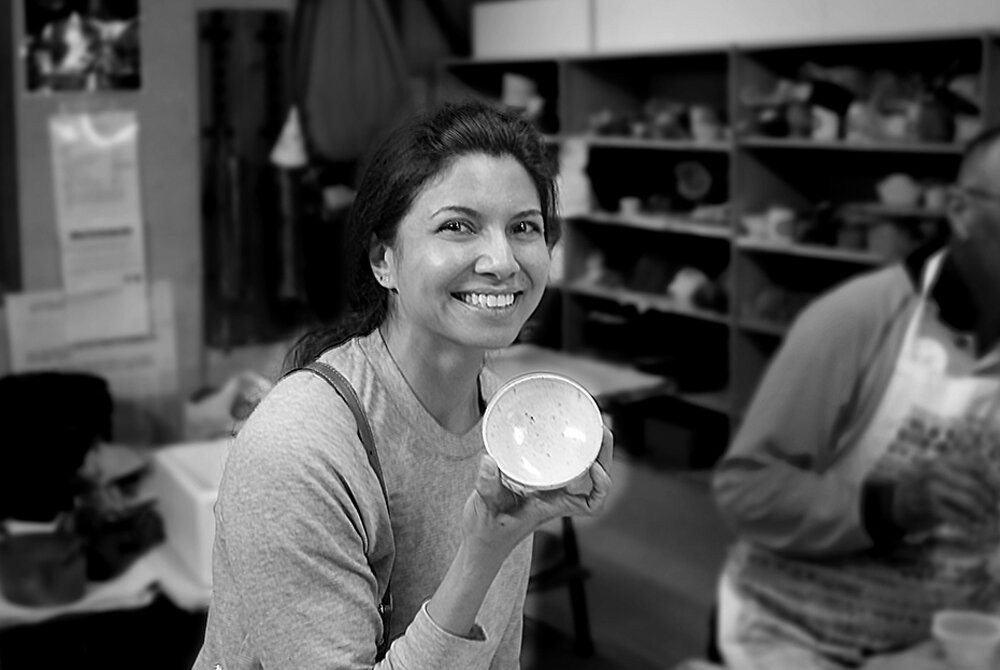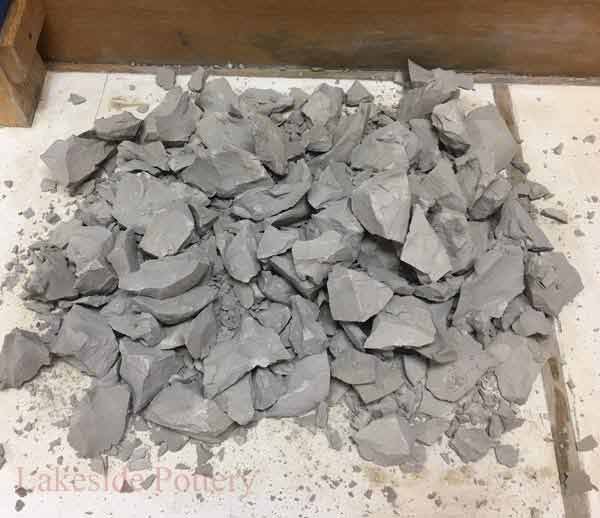
tips
Type in a keyword for what you would like to find :
Do you have trouble firing glazed beads?
Make yourself a "bead tree", as suggested by Alma Andrews (see illustration).Make a cone of clay about 10-13cm high, either by throwing it on the wheel or pinching or coiling it by hand.
Collective Wisdom
Woven Pattern Decoration
Have some fun experimenting with patterns made by weaving strips of paper painted with coloured slips or underglazes then placing them onto a wet slab.
Craquelure Glaze
Craquelure in glazes (see picture) is often a desired effect and is usually called “crackle”. It is mainly caused by the different shrinkage rates between the glaze and the clay during the firing process and results in a minute network of cracks in the glaze surface.
Decorations and Softening Leather Hard Clay
Includes: Children's crayons, Expired plastic credit card uses, Steel drill bit uses, Oiled stamps, Stamping decoration ideas, Smooth foot rims, Restoring leather hardness, Driftwood tools
Mending Cracks
Including: Mending Cracks in both leather hard and bisque ware, Reglazing tips
So How Do You Glaze The Base of a Ceramic Piece?
Use kiln stilts! Kiln stilts consist of metal rods that prop up a pottery piece off the shelf, and a durable one may be used multiple times.
Can You Re-glaze Pottery?
Sometimes a glaze or firing does not produce the desired result - the colour is either too bland, the texture is not found, or there are too many errors.
A Few Tricks & Tips
Just a list of my favourite few tips and techniques. I hope they come in handy. Ed
Non-Stick Lids
A problem with firing pots sometimes is that their lids can get stuck on from the glaze or firing process. To avoid this happening use Vaseline to line the rims of the pot and lid.
Speed Dry Your Clay
Don’t throw trimmings into a plastic container and let them sit for a week or so to dry before reclaiming. Reclaiming works best when the clay is bone dry. Here is a simple technique to speed the drying process.
Recycling Dried Clay Scraps or Blocks of Clay
You will need a solid surface to work on, a hammer, eye protection glasses, a 9 litre bucket, water, plastic bags (about bread loaf size) and a bit of muscle for wedging.
Is It Ceramics or Pottery?
Technically speaking, ceramics are things made from non-metal materials that are permanently changed when they’re heated. The classic example is clay: even a completely dry clay product will disintegrate in water
Speed Kills
The speed of your wheel is so important. The wheel needs to start out fast and gradually get slower. Centring should be done with your wheel at full speed. This feels counterintuitive at first, but - the faster your wheel is going the easier it is.
Burnishing A Pot
Burnishing clay is a technique that gives pottery a smooth sheen without using a ceramic glaze. It involves rubbing the clay with a hard object, like a smooth pebble or the back of a spoon.
Sanding bone dry pottery
A good alternative to sandpaper is to use an old green scrubbing pad from the kitchen. When these have been well used, they become soft and floppy, and make a nice flexible sanding tool.
Preparing Your Pottery For Exhibitions
Want to stand out with the presentation of your pottery for the exhibition – follow these 5 steps to take your pottery from beautiful to excellent.
Tips to reconstitute your work
Need to start working on a ceramic piece but find that the clay has become too hard to manipulate. Use these options to restore the plasticity of the clay so that you can continue working.
Tips for Drying Your Work Evenly
This is a handy list of tips for drying various types of ceramics
Wrap Your Edges!
Thinner, or completely surrounded by air, edges are a vulnerable area where fast or uneven drying can cause warping and cracking. To protect thin edges, tear up plastic strips and place them on the rims of still damp pots
Common Glaze Problems
This is a list of the most common glazing defects you might come across. Part of the unique charm with ceramics is that there are so many things that can go wrong, so feel free create your own.




















